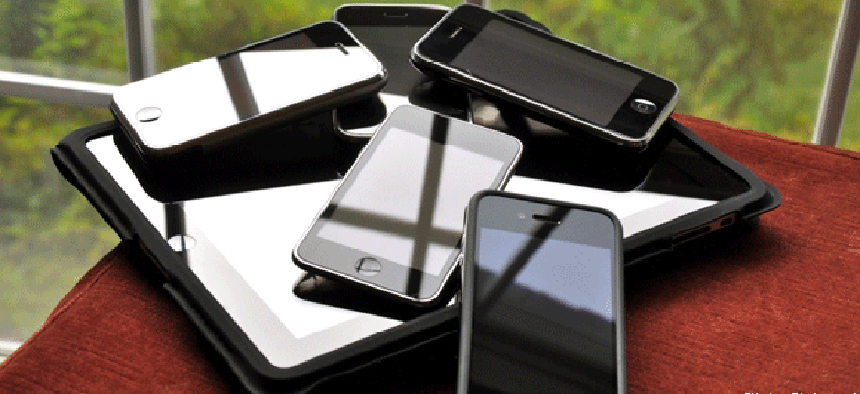What ICE's choice of iPhones says about agencies' mobile plans


Connecting state and local government leaders
Government users don't want to have to carry two phones, and instead want to be able to use their own devices at work. And since iPhones have become popular among consumers, those are what government agencies want to use.
The Homeland Security Department’s U.S. Immigration and Customs Enforcement (ICE) recently released a Fair Opportunity / Limited Resources Justification report on the Federal Business Opportunities website. In it ICE indicates that it wants to procure monthly cellular phone service for iPhones for more than 17,000 users. These users would include those at Homeland Security Investigations, Enforcement and Removal Operations, and Office of the Principal Legal Advisor employees.
This is a bit unusual in the government workspace, as most agencies are now working toward some sort of “bring you own device,” mixed-platform management solution. Although the Veterans Affairs Department and the National Oceanic and Atmospheric Administration at first seemed to favor the iPhone, their policies are becoming more open platform. And it must come as quite a blow to Research in Motion (RIM), maker of the BlackBerry, which was the clear leader in the government mobile marketplace until recent years.
But why would a high-profile agency such as the ICE decide to switch more than 80 percent of its employees from BlackBerrys to iPhones at this time? Well, the report’s authors said it themselves: “Commercial Viability Services must be derived from a commercial product that has significant market share to ensure product enhancement, support, and interest by third-party vendors to spur innovation and utility.”
Simply put, they are going with a brand that is more popular in the consumer market. What RIM was too slow to grasp was the same idea that government agencies have been struggling with for the last several months: government users don’t want to have to carry two phones, and instead want to be able to use their own devices at work. And since iPhones and Android devices are what has become popular among consumers, those are what government agencies want to use.
While the argument that BlackBerry is more secure held up for a while, the kernels in the newest versions of both iOS and Android operating systems have security features on par with RIM devices. And a feature called Kernel Address Space Layout Randomization in the new iOS 6 is supposed to provide even more protection against malware attacks.
So, essentially, RIM went to bed in a world where people were fine with paying for proprietary, single-platform management servers and woke up to a world where mobile device management was expected to be both platform-independent and as near to free as possible.
Some people think of news items like this to be nails in RIM’s coffin, but it is still not too late to turn it all around. What they need to do now, rather than trying desperately to hold on to a declining government market share, is to woo commercial users. If they are successful enough on that front, then government users may choose to bring BlackBerrys into their BYOD office. Hey, nobody said it would be easy.
NEXT STORY: Edit PDFs, even by talking, with Converter 8




